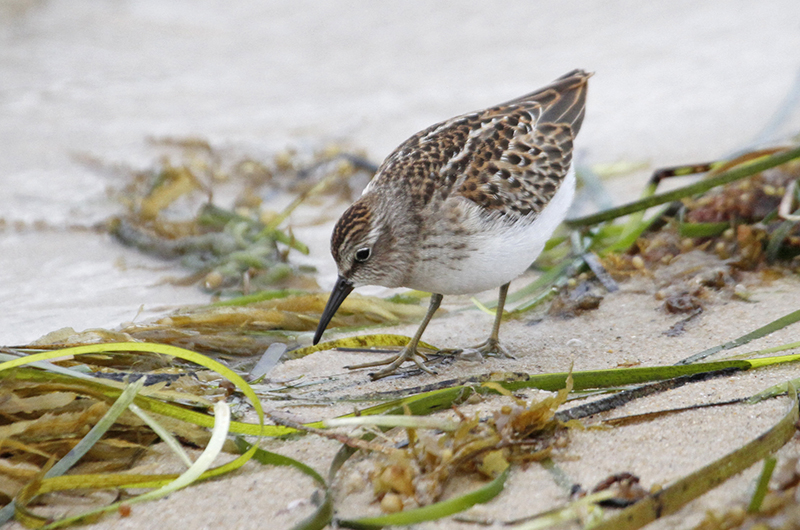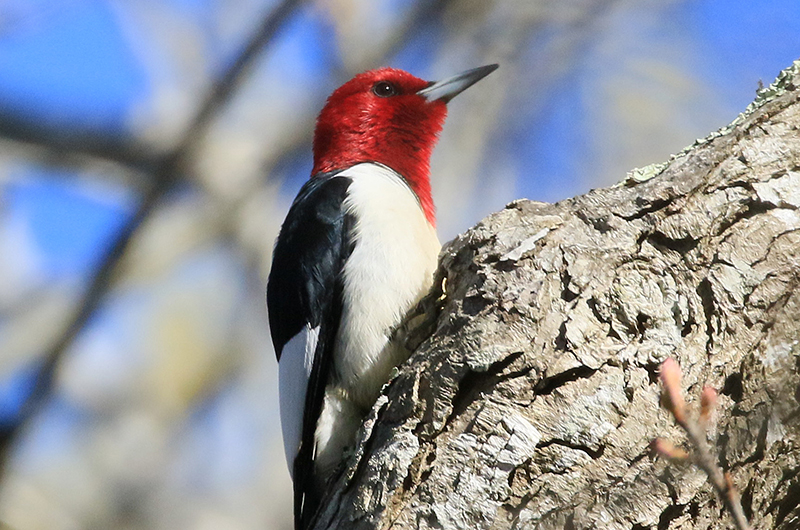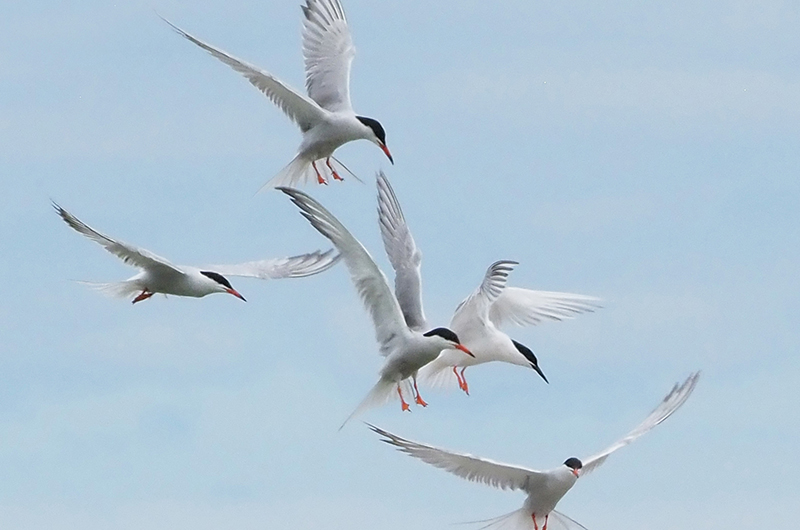Last week the southbound migration of shorebirds started with a few sightings of spotted sandpipers, glossy ibis, black-bellied plovers and lesser yellowlegs. The latter two species are coming from the Arctic, where the season is so short that birds leave if their nesting attempt fails; the season is not long enough for them to re-nest and raise their chicks. July is pretty much a month where we will see adult shorebirds that are mostly in their breeding plumages. In August the youngsters will arrive in their finery while the adults molt into their much more drab winter plumages.
So, the migratory influx continues.
Gus Ben David saw his first of season spotted sandpiper at one of the ponds in his yard on July 3. Pete Gilmore and Lanny McDowell visited Eel Pond on July 5 and found another spotted sandpiper and two immature ring-billed gulls. On July 7 Shea Fee found four black-bellied plovers, nine short-billed dowitchers, two laughing gull and four ring-billed gulls on Norton Point. Adam Cowie-Haskell counted seven least sandpipers on Lobsterville Beach that day.
Philip Edmundson spotted two short-billed dowitchers, one lesser yellowlegs and five lesser black-backed gulls along West Tisbury’s south shore on July 8. He observed a spotted sandpiper along the shore of Watcha Pond on July 10. Also that day, Steve Allen found three greater yellowlegs at Felix Neck and Anne Culbert and I found five semipalmated plovers, six sanderlings, three least sandpipers and 18 short-billed dowitchers.
On July 11 Bob Shriber counted 10 least sandpiper, 11 short-billed dowitcher, two lesser yellowlegs and a killdeer in Aquinnah’s West Basin, and Warren Woessner one semipalmated plover and 14 short-billed dowitchers at Norton Point.
Terns are also on the move; those whose nesting attempts failed are now gathering into large roosting flocks at Norton Point. On July 7 Shea Fee also spotted 70 least, 150 roseate and 800 common terns. Two days later Makenzie Luce spotted 200 least terns, 100 roseate and 200 common terns roosting at the western end of Norton Point.
The numbers of these birds in this flock changes constantly as the terns arrive from or depart to their feeding grounds southward over the Ocean or northward to Edgartown Harbor and Nantucket Sound. This large flock is also a good place to look for the less common terns, though the first of these, three forster’s terns, were found by Evan Zupfer near Oak Bluffs.
Another notable sighting is a red-headed woodpecker spotted by Jay and Wilson Jaroch on June 30 near Wascosim’s Rock. We have had several other sightings of this species around the Island this year but why isn’t this species more common? This species nested near Christiantown for a few years about 40 years ago.
Another species I enjoy seeing is a scarlet tanager. I have not seen very many of them in recent years so I was excited to see and hear one along the white trail at Cedar Tree Neck on July 9.
Julia Austin was excited to find an American redstart at the trailhead of Great Rock Bight on July 5. This very active warbler gets harder to spot at this time of the year since they are not singing as much; I could find a lot of them at Cedar Tree Neck in May and June. On July 9 I saw only three and did not hear any singing. Another warbler that is getting harder to find is the yellow warbler – not only are they singing less, but their southward migration starts in early July so some of our breeders may have already headed south. Warblers that are still reported frequently include ovenbird, northern parula, common yellowthroat, pine warbler, and prairie warbler.
Kate Meleney spotted a hairy woodpecker at Crystal Lake on July 2; her usual woodpeckers are downies.
In breeding season news, David Libby-Fielder has been watching three phoebe nestlings grow up and now they are getting too big for their nest on his porch. They will fledge soon. Seth Buddy reports from Waskosim’s Rock that he observed a black-capped chickadee feeding its young on July 5.
Osprey chicks are starting to fledge as reported by Kate Meleney at Crystal Lake, Ali Mead at the Oak Bluffs pumping station, and Elizabeth Luce in Edgartown. Their plentiful iconic calls will be appreciated overhead when they fledge, as they will be begging their parents to feed them as they learn to hunt for their own food. I would much rather listen to them than to the noisy ubiquitous leaf blowers.
Beach birds are also raising their youngsters. Jeff Bernier reports that black skimmer and common tern chicks were running around their nesting colony at Little Beach on July 8, and a number of oystercatcher chicks have fledged. I noted eight piping plover chicks there on July 6, four of which have already fledged. When Anne Culbert and I visited the western end of Norton Point on July 10, we counted five pairs of noisy willets but no chicks visible, five oystercatchers — including two that fledged recently — and a pair of piping plovers with two chicks.
Last week I reported that whip-poor-wills have been reported only from Chappaquiddick and Aquinnah this year. Charles Morano reports they were at the State Forest headquarters and Jeff Peters reports they were present at the Disc Golf Course. He also heard an eastern wood-pewee there.
Charlie Kernick, Mary Austin, Susan Whiting and Sue Shea report that Baltimore orioles are more frequent than hummingbirds at their hummingbird feeders.
Please email your sightings to birds@mvgazette.com.
Robert Culbert is an ecological consultant with Nature Watch LLC living in Vineyard Haven.











Comments
Comment policy »